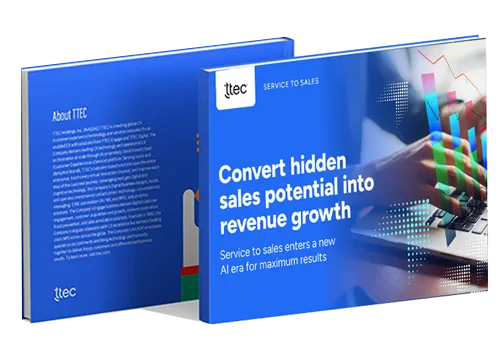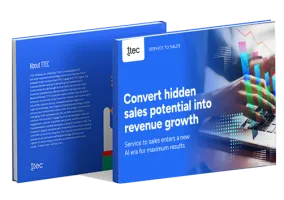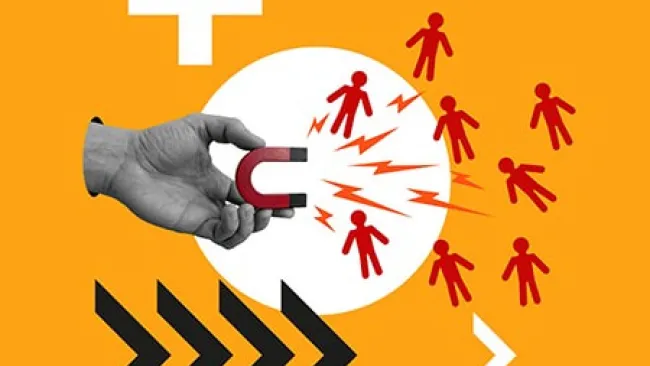A recent blog post (Waking the Sleeping Tiger With a Strategic Approach to Sales) posited that businesses can stretch their sales and marketing investments and achieve better results by, first and foremost, using insights and analytics to focus their activities on the best, most predictive targets. Of course, in this age of advanced customer connectivity, big data, and real-time decision-making, this is accepted wisdom.
But like lots of surefire recommendations, the trick is making them happen.
Many well-intentioned companies fail to improve the efficiency and effectiveness of their sales and marketing activities because they haven’t followed a proven, analytically driven roadmap. Ours has four steps.
Step 1: Assemble a marketing universe dataset
In order to generate more (business results) with less (sales and marketing resources), there needs to be a pronounced leap forward in insight-led decision making. And being smarter usually means having better data at your disposal. So, a vital step in the roadmap is creating a rich dataset of the consumers in your marketplace. This entails aggregating, integrating, and leveraging information from a variety of sources, including your own data repositories, external databases, and, increasingly, from existing and prospective customers directly. This data ideally should contain information pertaining to each consumer’s attributes, attitudes, and actions.
With new advances in web analytics, SEO, mobile, and social media tools, you can learn enough about even anonymous users to build relevant audiences and create differentiated experiences. This is an area of great opportunity in Asian markets, where mobile usage dominates.
These data assets need to be linkable (at the individual-level when possible) through a common code or “user ID.”
This is not new or novel. Firms build these datasets all the time. However, new forms of data are helping us understand consumers more completely. Leading companies are adding customer channel interaction data to their repositories, including voice recordings and chat transcripts, which can be very revealing about a consumer’s engagement with a company, show how they feel about their relationship, and help predict behavior critical to their lifetime value.
And at the top of the sales and marketing funnel, users who search via Google and other search engines can also be identified. Many of those users are logged into their accounts when they conduct searches, tying their behavior to information in their profile. And don’t forget that a large percentage of the 1.6 billion global Facebook users click on products and services found within the platform before clicking to external sites for more information. Their profile data adds detail to aggregate and individual data that can be leveraged for customer acquisition programs.
Step 2: Identify high potential value targets
Once the marketing universe repository is assembled, the next step is to conduct a robust analysis of its members to find the best targets for your sales and marketing activities. This usually involves creating a pyramid of potential audiences with “suspects” or non-buyers at the bottom and your core group (the 20 percent that drive 80 percent of your sales) at the top.
Again, this hierarchy is fairly standard and many firms use a similar segmentation to guide their targeting strategies today. But recent advances in data, analysis, and technology can take you to a higher level and allow you to rank order your targets individually, not just by broad groupings. In other words, you can actually assess each consumer’s likelihood to purchase from you and estimate the size of his or her spend. Combining the two lets you derive the “expected value of each consumer.” And in this way, you can hone in on precisely those targets whot will enable you to maximize your sales given your budget.
For prospects, companies are creating lookalike audiences based on their current customers to prioritize sales and marketing outreach plans to those most likely to be receptive.
Step 3: Design tailored value propositions
Mass customization through advanced technologies has forever debunked the practice of one-size-fits-all. Every day we see evidence that firms are creating offers that are specially designed for each of us. The goal is not only to present us with offers that will motivate us to buy, but to do so with the least amount of expense. Why give a consumer a $50 discount offer when a $20 discount offer is all that is needed? Research and, more pointedly, rigorous multifactorial testing through experimental test design, can enable you literally to find the least expensive offer for each customer to maximize your net sales.
Step 4: Automate as much as possible
Finally, sustaining success in a lean resource environment means automating as many processes as possible. In fact, not turning keen, new insights into repeatable action is frequently the most egregious error firms make.
To sustain success, embed your analytic engines (models, algorithms, and decision rules) into end-to-end processes that orchestrate best actions all along the customer journey. Again this requires modern technologies and specially designed APIs that allow you to make personalized decisions at scale. And while all of this data and technology may sound costly, the greater sales and marketing efficiencies can more than offset the expenses.
By following this four-step roadmap, you can reallocate your spending to the most productive potential buyers and away from the least productive. This is how you can maximize the return on your spending. We’ve seen this done in many cases and believe that every firm can get smarter and act smarter.
* Note: David McMurdo, Vice President of TTEC Asia, contributed to this blog.
Four Steps to Insight-Driven Sales and Marketing in Lean Times


















